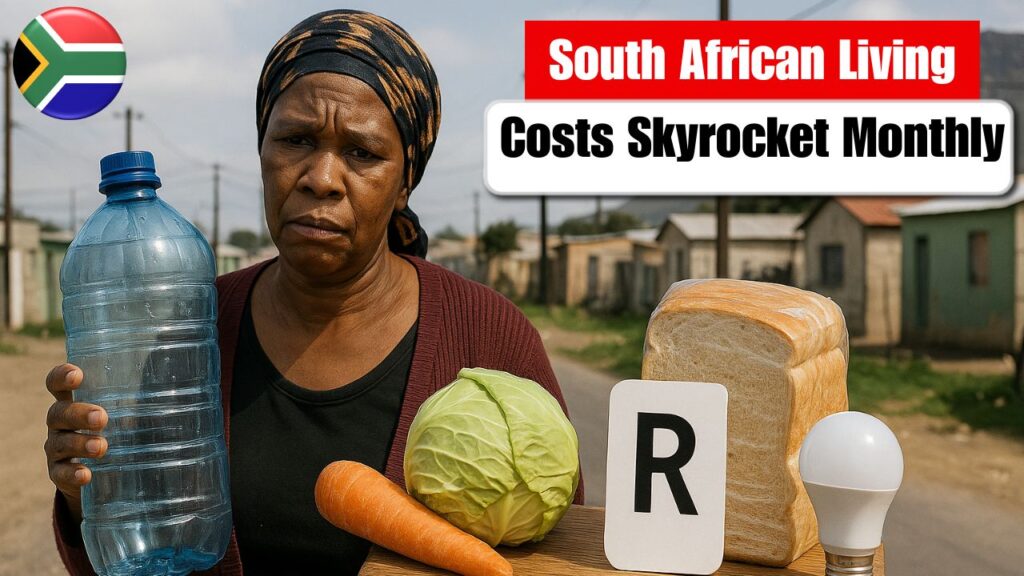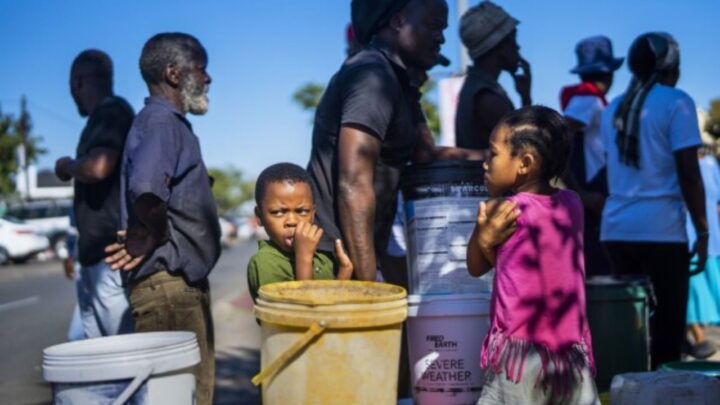Everyday life in South Africa is becoming increasingly challenging as the cost of essential needs like water, power and food continues to surge. From Johannesburg to Cape Town, millions of households are struggling to balance their monthly expenses amid rising utility bills and food inflation. The government’s efforts to stabilize prices have not yet shown visible relief, leaving many South Africans feeling the squeeze. With energy tariffs expected to climb again in November, families are cutting back on non-essential spending to cope with the pressure of daily living costs.

Rising Power Tariffs Add Pressure on South African Families
The electricity price hike announced by Eskom has caused deep concern among residents already dealing with high living costs. Increases of over 12% mean higher expenses for lighting, heating, and basic home appliances. For low-income families, these costs have become unbearable. Small businesses are also feeling the strain, forcing many to close early or operate fewer days. South Africa’s energy crisis has been worsened by frequent load shedding, making the situation even more frustrating for citizens who feel they are paying more but receiving less reliability in return.
Read Also : SASSA Black Card 2025 Everything You Need to Know Activation Fees Limits and Benefits
Water Bills and Food Costs Continue to Soar Nationwide
Alongside rising energy bills, water tariffs and grocery prices have also spiked across multiple provinces. Households in Gauteng, Limpopo, and KwaZulu-Natal are reporting average water bill increases of up to 15%. Meanwhile, basic food items like bread, milk, and vegetables have seen double-digit inflation rates since early 2025. Experts blame the combination of drought conditions, high fuel prices, and global supply issues for pushing up the cost of living. Despite government subsidies, the relief is minimal for many working-class families across South Africa.

Government’s Struggle to Control Inflation and Provide Relief
The South African government is under growing pressure to introduce subsidy programs and social relief measures. Initiatives like the SASSA Social Relief Grant and utility rebates have helped millions temporarily, but inflation remains high. Economists warn that unless electricity and food price inflation is controlled, the nation could face further economic slowdown. Authorities are now discussing long-term reforms to improve energy supply, water management, and food production systems to prevent another affordability crisis in 2026.
Impact of Rising Prices on South African Households
For the average South African family, the constant increase in living costs has become overwhelming. Many are cutting down on essential consumption or relying on government support just to survive. Middle-class households are feeling the pinch too, as monthly budgets stretch thinner each month. With electricity, water, and food prices all climbing together, the situation demands urgent national attention. Experts suggest that better regulation, renewable energy investment, and strict anti-price manipulation laws are key to bringing real relief to citizens.
| Category | 2024 Average Cost | 2025 Current Cost | Percentage Increase |
|---|---|---|---|
| Electricity (per kWh) | R2.10 | R2.35 | +12% |
| Water (per KL) | R25.00 | R29.00 | +16% |
| Bread (loaf) | R15.50 | R18.20 | +17% |
| Cooking Oil (2L) | R64.00 | R75.00 | +17% |
| Average Monthly Expenses | R9,800 | R11,400 | +16% |
FAQ 1: Why are prices rising so fast in South Africa?
Due to higher energy costs, drought impacts, and global inflation trends.
FAQ 2: Which provinces face the highest water tariffs?
Gauteng, Limpopo, and KwaZulu-Natal currently report the steepest water bill hikes.
FAQ 3: Will the government provide relief soon?
Yes, plans for new social relief grants and subsidies are being discussed for 2026.
FAQ 4: How can citizens reduce their household costs?
By conserving energy, using prepaid electricity, and purchasing food in bulk when possible.



